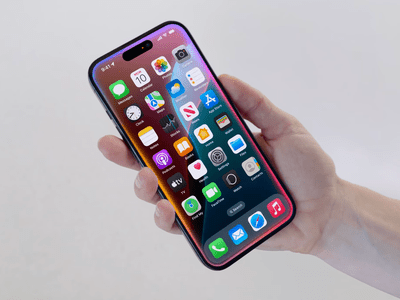
Resolving Peripheral Detection Issues in Windows - Guidance by YL Computing Experts

Mastering Display Customization on Windows [Student]: What Is the Value of (B ) if It Satisfies the Equation (\Frac{b}{6} = 9 )?
The Windows 10 display settings allow you to change the appearance of your desktop and customize it to your liking. There are many different display settings you can adjust, from adjusting the brightness of your screen to choosing the size of text and icons on your monitor. Here is a step-by-step guide on how to adjust your Windows 10 display settings.
1. Find the Start button located at the bottom left corner of your screen. Click on the Start button and then select Settings.
2. In the Settings window, click on System.
3. On the left side of the window, click on Display. This will open up the display settings options.
4. You can adjust the brightness of your screen by using the slider located at the top of the page. You can also change the scaling of your screen by selecting one of the preset sizes or manually adjusting the slider.
5. To adjust the size of text and icons on your monitor, scroll down to the Scale and layout section. Here you can choose between the recommended size and manually entering a custom size. Once you have chosen the size you would like, click the Apply button to save your changes.
6. You can also adjust the orientation of your display by clicking the dropdown menu located under Orientation. You have the options to choose between landscape, portrait, and rotated.
7. Next, scroll down to the Multiple displays section. Here you can choose to extend your display or duplicate it onto another monitor.
8. Finally, scroll down to the Advanced display settings section. Here you can find more advanced display settings such as resolution and color depth.
By making these adjustments to your Windows 10 display settings, you can customize your desktop to fit your personal preference. Additionally, these settings can help improve the clarity of your monitor for a better viewing experience.
Post navigation
What type of maintenance tasks should I be performing on my PC to keep it running efficiently?
What is the best way to clean my computer’s registry?
Also read:
- [New] How to Access Free Gaming Scores Legally and Easily
- [Updated] 2024 Approved Essential YouTube Beauty Influencers 10 Creators to Watch
- 2024 Approved YouTube's Elite Gear Top 5 Video Chat Headsets
- Free Online Converter: Change MP4 Videos Into Animated GIFs with Movavi
- Free Online Converter: Change PGM Image Files to BMP Format Instantly with Movavi
- Free Online Converter: Turn WMA Files Into MP3 Format with Movavi
- Gratis SWF-Inpuntdateien in AVI Uploaden - Heftig Optimierter MoveVi Video Konverter Online
- Gratuit Online M4A-Mp4 Konvertor - M4B Naar M4V Met Movavi
- Guía Simple Para Transformar Video MKV a Apto M4A Online Gratis Por Medio De Movavi Solutions
- How to Recover Access After an Instagram Account Suspension – Essential Tips and Tricks
- Important Announcement From the Director of PCDJ
- In 2024, The Best Android SIM Unlock Code Generators Unlock Your Xiaomi Redmi A2+ Phone Hassle-Free
- In 2024, The Ultimate Pathway to Perfected Kinemaster Edits
- Master Class Review on BYB E430: The Superior Swing Arm LED Illumination Solution
- Mudando De Formatos Imagens: Convertendo WebP Em JPG Efetivamente Usando O Software Da Movavi
- Online OGM 무료 변환 - Movavi MPG을 MP4로 자주
- The Great Digital Debate Meta Vs. Omni
- Title: Resolving Peripheral Detection Issues in Windows - Guidance by YL Computing Experts
- Author: Robert
- Created at : 2025-03-01 20:14:29
- Updated at : 2025-03-07 21:36:56
- Link: https://win-brilliant.techidaily.com/resolving-peripheral-detection-issues-in-windows-guidance-by-yl-computing-experts/
- License: This work is licensed under CC BY-NC-SA 4.0.